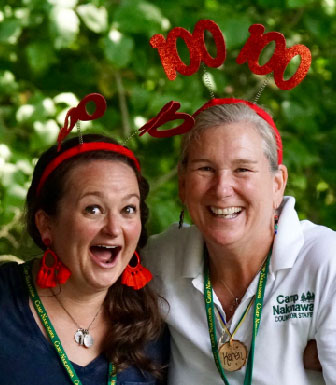LEARN MORE ABOUT OUR
Deep Camp Nakanawa Roots
Nakanawa provides an outdoor summer camp experience for girls and young women in communities of cabins around a private, wooded lake. Campers aged 8 to 17 participate in a varied yet structured program of sports and activities to develop skills, broaden interests, build team spirit and have fun with new friends from near and far.
Camp Nakanawa’s philosophy emphasizes character, unselfishness, good sportsmanship, respect for nature and cooperative cabin living; away from school and social pressures, campers thrive as they embrace our century-old traditions and develop increasing independence.
Summers at Nakanawa foster a love of simple fun and the practice of courtesy, patience, and consideration of others; campers learn to balance companionship with achievement. Our alumnae are known worldwide as confident leaders with enduring Nakanawa friendships.
Mission: Camp Nakanawa provides an overnight summer camp to educate girls and young women through outdoor experiences to gain confidence and reach their full potential.
Vision: Camp Nakanawa develops the potential of girls and young women in a nurturing environment where they discover their own excellence and develop lifelong friendships. This vision is fulfilled by cultivating character, confidence, courage, kindness, and leadership.
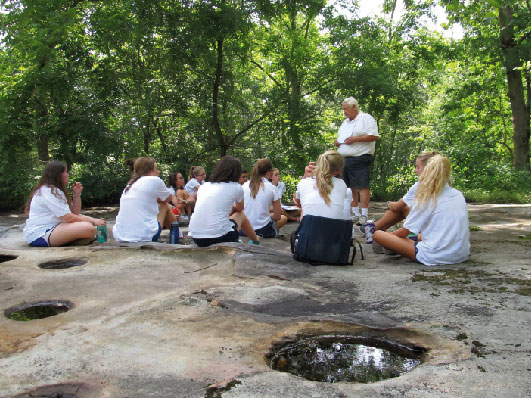
Historic
Native American Background
Centuries before Nakanawa’s founder – Laban Lacy Rice – was born, the 1,000-acre tract which is now the camp was home for early peoples, dating back thousands of years.
Arrowheads, spear tips, and tomahawks were found as well as bowl-shaped hollows in the flat rocks. The bowl shapes known as “kettle rocks” were caused by the Native American practice of grinding. This ancient version of a mortar and pestle not only served as a way of grinding food, but was a vital social spot for the native peoples
Historic
Rocky Start for Camp Nakanawa
William Cooper had big plans for the small community of Mayland and purchased a number of large tracts in the area. Cooper persuaded the Mayland men to help him build a lake in a low-lying meadow. Using mule teams, the neighbors cleared trees that grew in the meadow and helped build a 31-foot-tall dam that cost Cooper thousands of dollars. According to Bob Garrett, one of the workers, a concrete core was poured and packed on each side with rock, dirt and felled logs. The rain and natural underground springs soon began to fill the low areas.
“It was just a swamp before. People let their cattle graze down there.” remembered resident Mamie Garrett
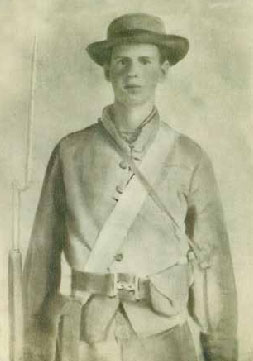

Historic
Chance Leads the Colonel to Mayland
In 1919 Colonel Rice had settled on a location for his camp … in Bloomington Springs, Tennessee.
An accidental conversation caused him to change plans. He had all but signed the papers for the other piece of land when he overheard two men speaking of property for sale on a lake near Crossville. He got the particulars, journeyed up to the Cumberland Plateau, and knew that he had found the ideal spot.
On March 24, 1920, the 1,000-acre tract was purchased for $30,000 by Colonel Rice and Perry O’Neil, Annie Hays’ husband.
“The site is of indescribable charm… the ideal elevation of 2,250 feet … the mighty forest with its graceful pines, sturdy oaks and hickories, quiet vales where fern and wild flowers grow. Its chief asset is the lake, covering one hundred and fifty acres, beautiful in its broken shore line, wholesome because of its undersurface springs, and delightful by reason of its privacy.”
– Colonel Rice
The Spirit of Nakanawa
Colonel Rice used the words “the spirit of Nakanawa” in one of his first catalogs to describe “the beautiful spirit of good will and friendliness” that characterized camp from the start. “The moral and spiritual atmosphere is most wholesome … due to the quiet, un-ostentatious kind of service that marks camp life daily … To define all this would be as futile as to try to touch light or see music.”
“I come to this place to find myself. It is so easy to get lost in the world.”
– Colonel Rice, 1929
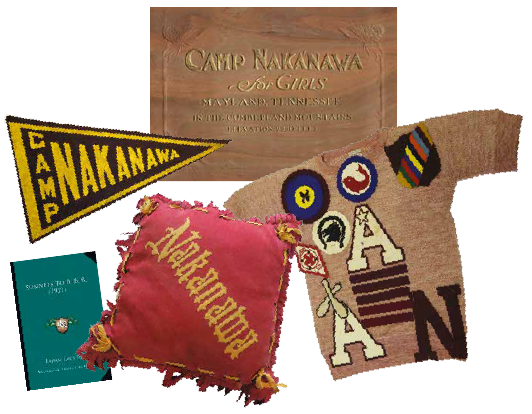
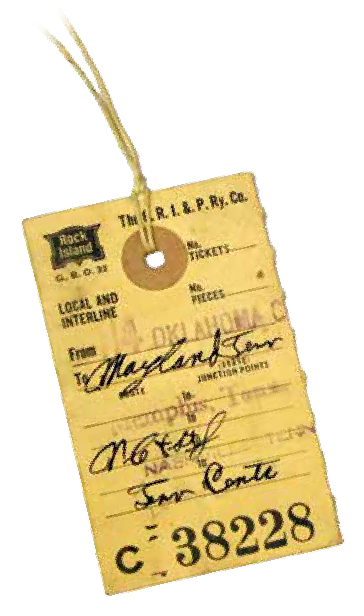
Opening Day: July 1, 1920
Mrs. Martin:
“A Lady with a Capital L”
“During camp’s first decade, Mrs. Martin was the leading spirit that dominated camp. She was a person of exquisite taste, charming – not sugary, and with deep insight and understanding. She complemented my father. It was a delightful balance of two dedicated people that made it work.”
– Annie Hays O’Neil
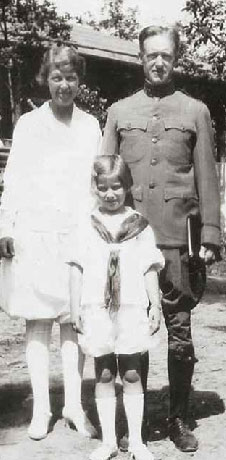
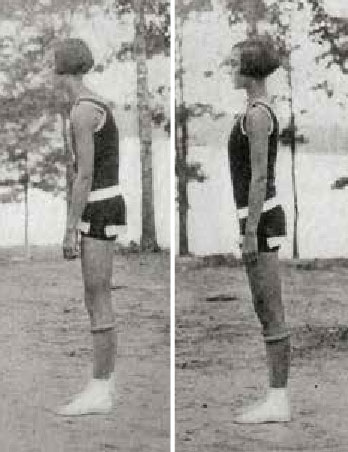
Posture Please
Decorum of a Lady
Young ladies were expected to be schooled in classical music, poetry, aesthetic dance, and the feminine arts of embroidery and sewing.
Graceful posture was emphasized and “corrective classes” in posture were offered from the ’20s to the ’70s. Teams received Distinctions for having the most girls who improved their posture
Alma Mater
Sung to the tune of "Aura Lee”, better recognized as “Love Me Tender”
There is a spot we all hold dear, beside a mountain lake, where symphonies of birds we hear and friendships true we make.
Nakanawa, Nakanawa, as we sing to thee, all our hearts are filled with love and lasting loyalty.
As silver clouds touch evening skies we wish upon a star, and voices from the woodlands rise singing from afar.
Nakanawa, Nakanawa, as we sing to thee all our hearts are filled with love and lasting loyalty.
A Brief Timeline of Nakanawa Milestones
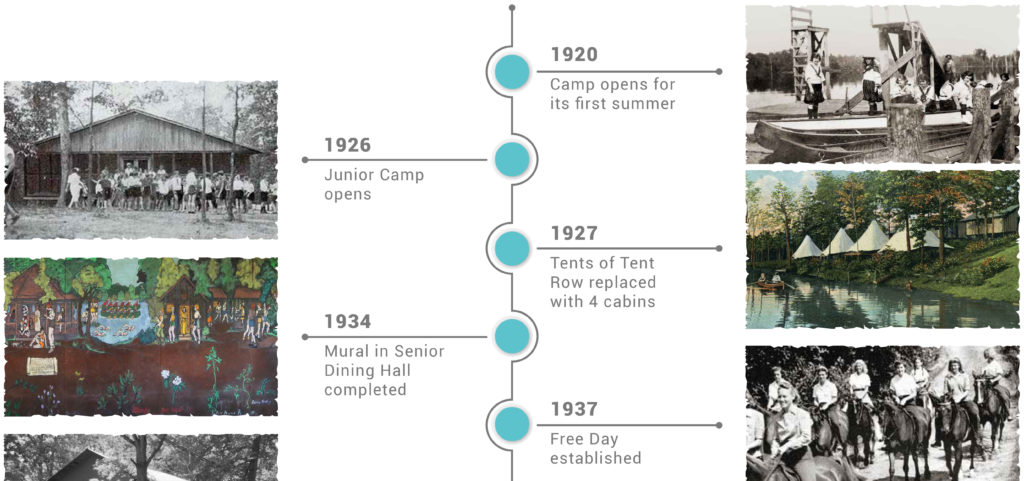



Senior Dining Hall Mural
Ely Mahier was responsible for one of the most treasured reminders of camp’s history, the mural in the Senior Dining Hall. In 1934, the Valkyrie team gifted masonite panels on which Ely painted a sweeping scene of Nakanawa’s buildings and activities. Colonel Rice, Annie Hayes and other key figures are depicted. Many campers, including Mitch, helped to paint the huge piece of artwork. When the old Dining Hall was replaced, the mural was saved and reinstalled in the new building. Over the decades, the mural’s once-bright colors faded, and in 1979 Mitch asked Margaret Matens to restore it.
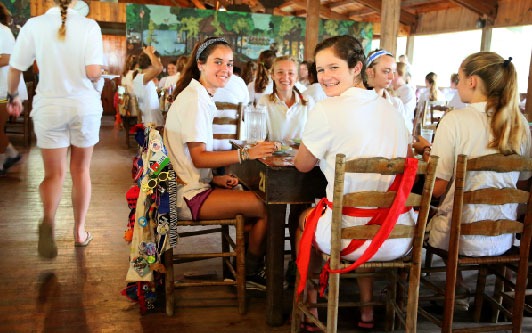
Past, present and future
Table Manners
At Camp Nakanawa, we sing or say a blessing together before each meal. Campers eat family style with counselors serving the meal, and hygienic, courteous table manners are encouraged. The fellowship campers and counselors enjoy at the table makes lasting memories and friendships among different age groups.
LOOKING FORWARD
Ensuring a Bright Future
The next few years will be ones of transition and change as Ann and Pepe retire and camp segues to a non-profit. Karen Rathgeber Hale will take over the reins to serve as the next Director of Camp Nakanawa. Karen’s long tenure as Head Counselor and deep connection to camp, combined with her business experience, make her an ideal choice. Karen’s dedication and love of the camp will be the guiding light for the 500+ girls who call Nakanawa home each summer.
